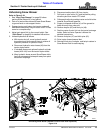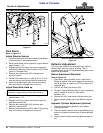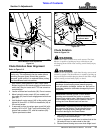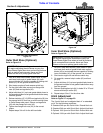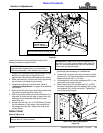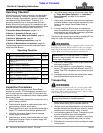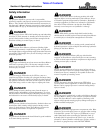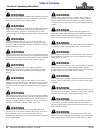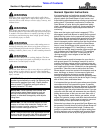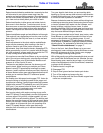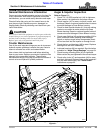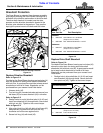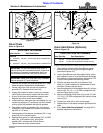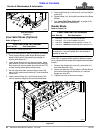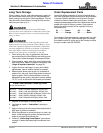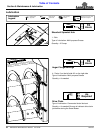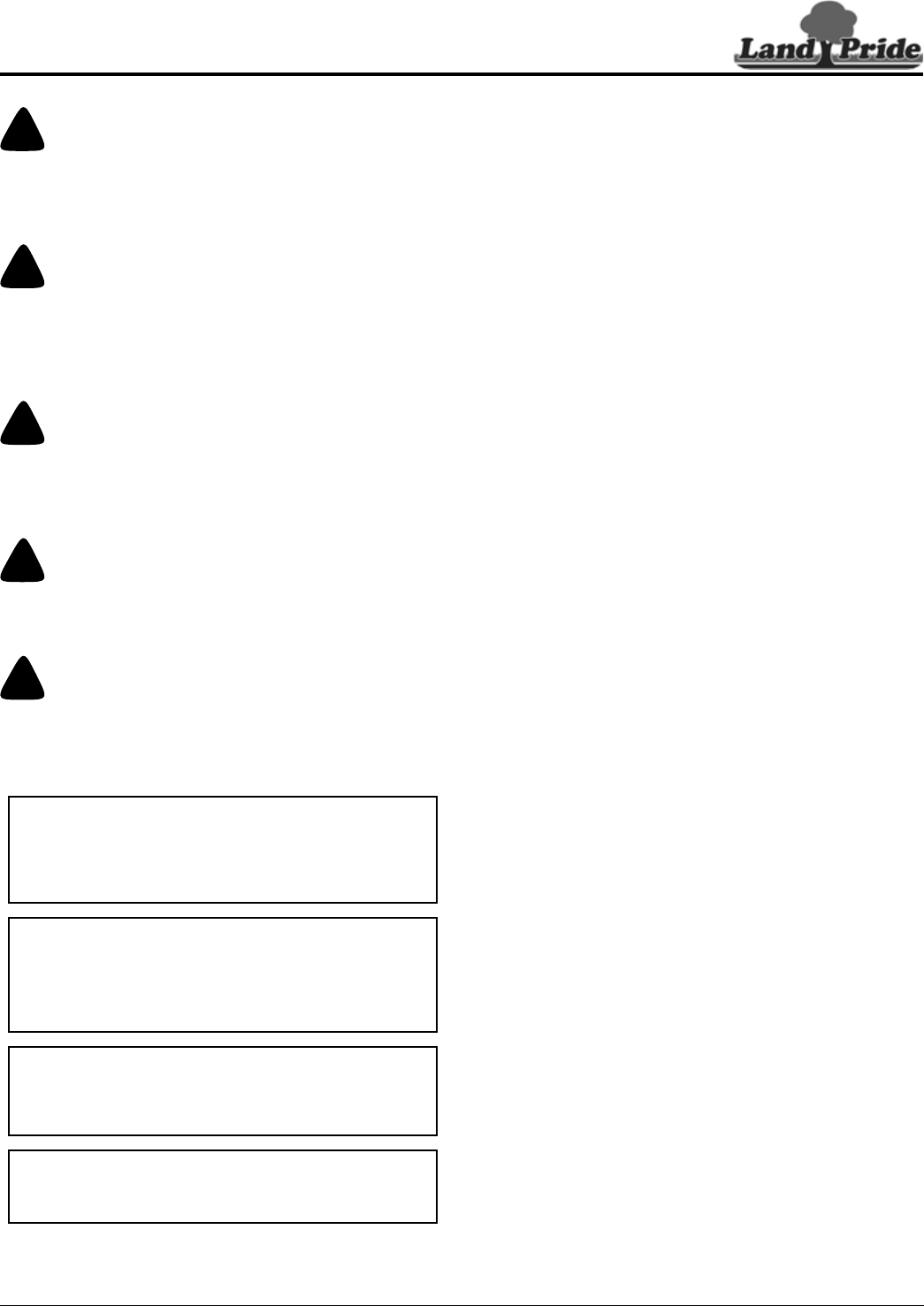
27
Section 4: Operating Instructions
12/15/15
SBD3596 & SBD35108 Snow Blowers 370-347M
Table of Contents
!
WARNING
Always be aware of pedestrians and vehicle traffic. Move
snow during low-traffic hours. Adjust chute angle to correct
trajectory due to wind. Always exercise safety, courtesy, and
common sense.
!
WARNING
Keep people and animals away while removing snow. Never
operate Snow Blower with chute throwing snow toward people
or animals. The Snow Blower is capable of picking up large
solid objects and discharging them at high speeds causing
serious bodily injury or death.
!
WARNING
Beware of obstacles near the tractor while making turns or
backing up removing snow. Never swing front of tractor or
tractor mounted front loader into fire hydrants, mail boxes,
buildings, vehicles, fences, trees, or other standing obstacles.
!
WARNING
Do not use Snow Blower as a working platform. The Snow
Blower is not properly designed or guarded for this use and
could cause a serious injury or death.
!
WARNING
Do not use Snow Blower to lift or carry objects; to pull fence
posts, stumps or other objects; or to tow other equipment.
Doing so can damage the Snow Blower, cause serious bodily
injury or death.
IMPORTANT: Check driveline coupling bolt at the
gearbox input shaft daily to verify it is tight and yoke
is secured to gearbox input shaft. Check driveline
yoke at tractor PTO shaft to verify pull collar is
properly locked to PTO shaft.
IMPORTANT: Never operate Snow Blower with
chute throwing snow toward property such as
vehicles and buildings that can be scratched,
dented, or otherwise damaged by solid objects
hitting them.
IMPORTANT: Do not use Snow Blower as a box
scraper or to blow other materials. Doing so can
break the auger, impeller, gearbox, driveline, and
cause structural damage to the unit.
NOTE: Always check with local regulations to know
where snow can be legally piled. Never pile snow on
someone else’s property, streets, or sidewalks.
General Operator Instructions
It is important that you familiarize yourself with the
Operator’s Manual, complete the Operator’s Checklist,
properly attach the Snow Blower to your tractor, and
make leveling adjustments before running an operational
safety check. If you detect a malfunction in either the
Snow Blower or tractor during the operational safety
check, immediately shut tractor off, remove switch key,
and make all necessary repairs/adjustments before
continuing.
Make sure the tractor park brake is engaged, PTO is
disengaged, and Snow Blower is resting on the ground
before starting tractor for the operational safety check.
Start tractor and set engine throttle speed at a low idle.
Raise Snow Blower with tractor’s hydraulic lift control
lever to transport position making sure that the driveline
does not bind and does not contact the Snow Blower
frame. Lower Snow Blower to the ground and at a low
engine speed engage PTO. If everything is running
smoothly at a low idle, slowly increase tractor engine rpm
until it reaches the Snow Blower’s full PTO operating
speed of 540 rpm or 1000 rpm. If everything is still
running smoothly, return engine to low idle, and
disengage PTO.
You should now be ready to transport to your site at a
safe ground speed. On roadways transport in such a
manner that faster moving vehicles can easily see you
and pass you safely. Reduce your speed when travelling
over rough and hilly terrain. Avoid quick or sharp steering
corrections. Take extra care to ensure that the Snow
Blower doesn’t come into contact with obstacles such as
trees, buildings, or fences. Use accessory lights and
appropriate reflective devices to provide adequate
warning to pedestrians and other vehicle operators when
traveling on public roads and in the dark of night. Comply
with all local, state, and federal laws.
It is important that you know the area where snow is to be
removed and what lies beneath the snow. If possible,
survey the area ahead of the snow. Remove all possible
obstructions and mark any obstructions that cannot be
removed with flags that project above the snow. If you are
unfamiliar with the area, ask someone who can identify
hidden obstructions so that you can mark them with a
flag. Flag manholes, water meters, gas meters, culvert
edges, fire hydrants, stumps, and other obstructions that
are not easily seen. It really pays to inspect a new area
and to develop a safe plan before moving snow.
Determine how close to the ground the Snow Blower can
be operated. Set skid shoes to hold the Snow Blower off
the ground at a predetermined height. Surfaces with
gravel or crushed rock will require a higher setting than
hard flat surfaces such as asphalt and concrete. Never
set Snow Blower so low as to pick-up gravel and rock.



